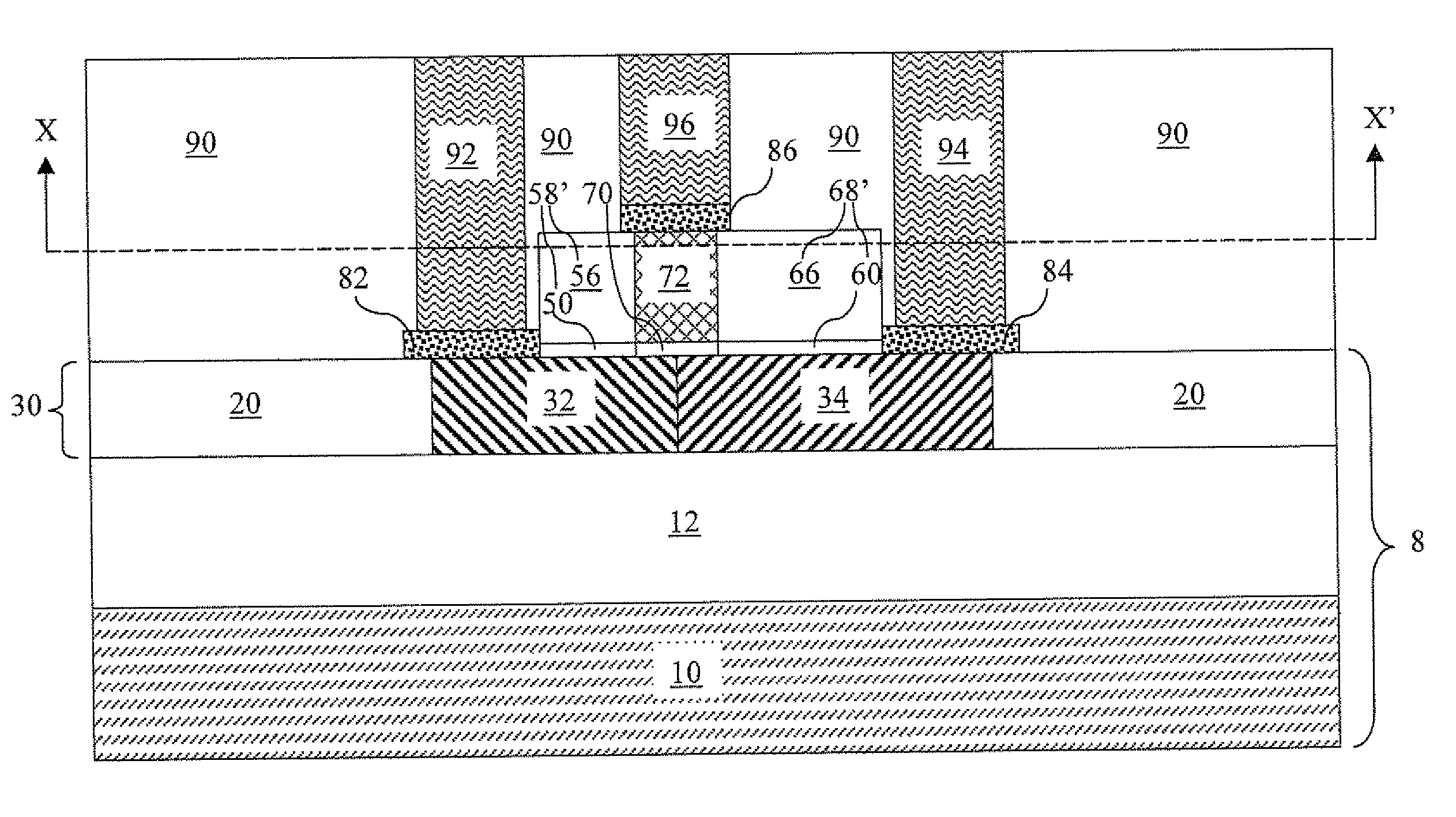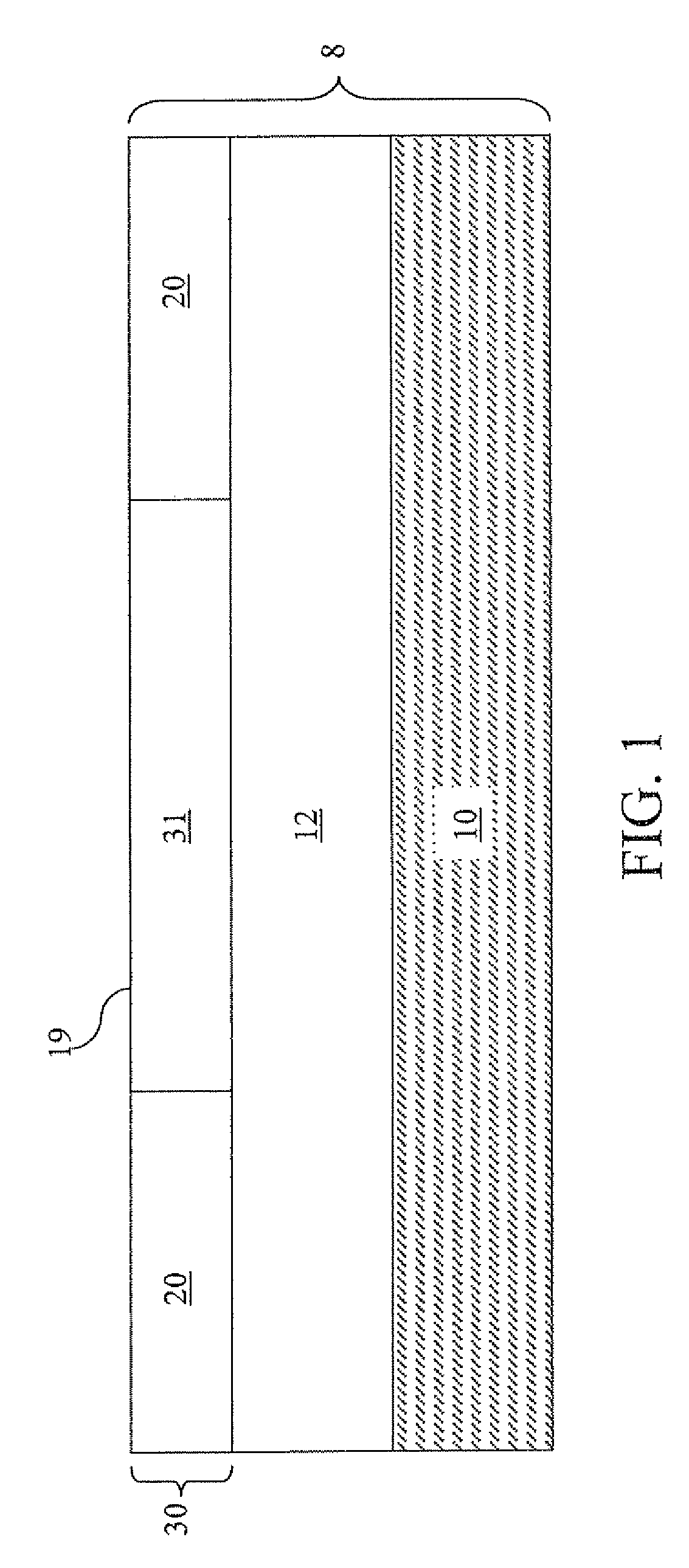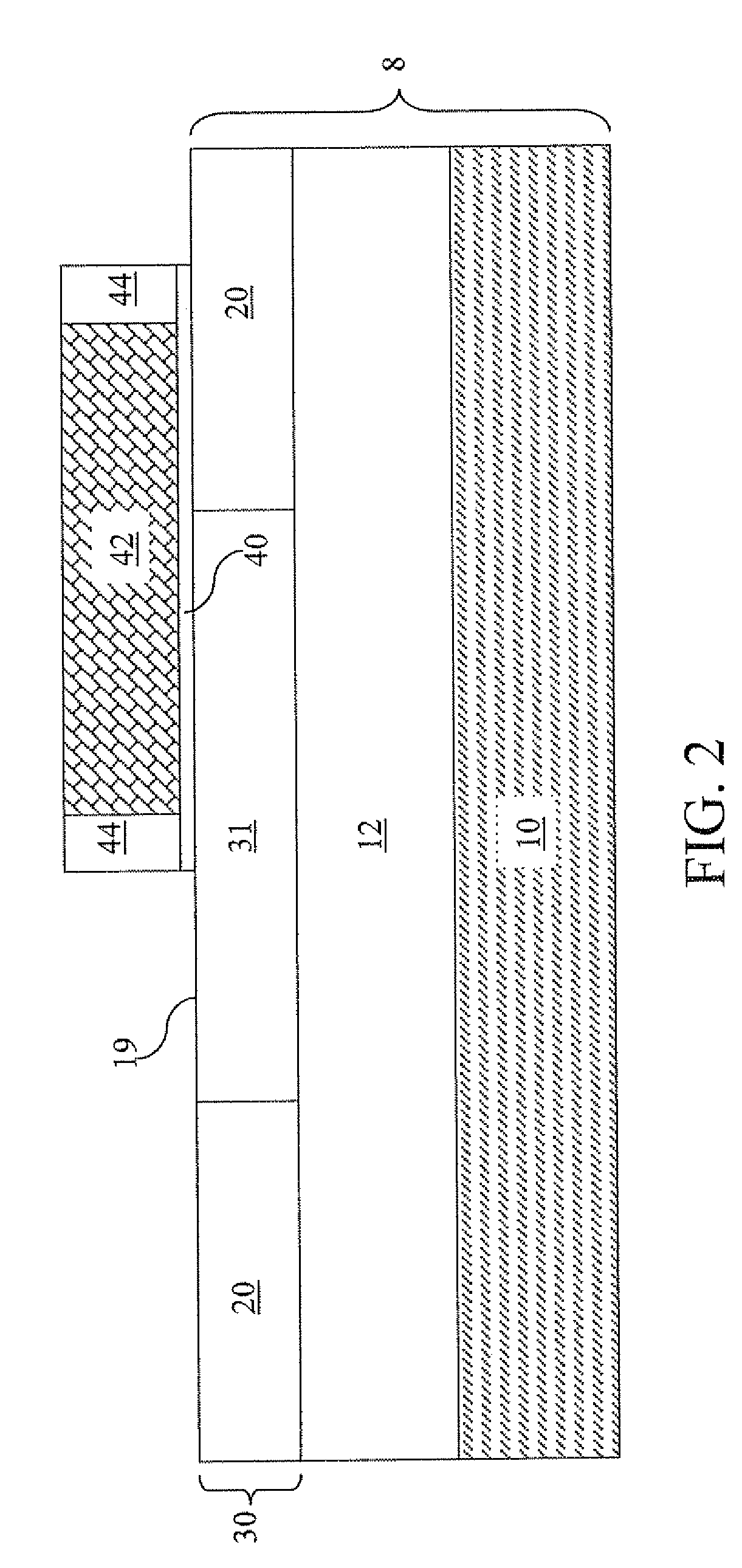Tunneling effect transistor with self-aligned gate
a technology of tunneling effect transistor and gate, which is applied in the direction of semiconductor devices, semiconductor/solid-state device details, diodes, etc., can solve the problems of degrading device performance as an electronic switch, large substrate area, and inability to integrate into practical products
- Summary
- Abstract
- Description
- Claims
- Application Information
AI Technical Summary
Benefits of technology
Problems solved by technology
Method used
Image
Examples
Embodiment Construction
[0075]As stated above, the present invention relates to tunneling effect transistor structures having a self-aligned gate and methods of manufacturing the same, which are now described in detail with accompanying figures. It is noted that like and corresponding elements are referred to by like reference numerals.
[0076]Referring to FIG. 1, a first exemplary semiconductor structure according to one embodiment of the present invention comprises a semiconductor substrate 8 having a handle substrate 10, a buried insulator layer 12, and a top semiconductor layer 30. The top semiconductor layer 30 contains a semiconductor region 31 and shallow trench isolation 20. The thickness of the top semiconductor layer 30 may be from about 20 nm to about 300 nm, although lesser and greater thickness are herein contemplated also. Methods of forming the shallow trench isolation 20 which comprises a dielectric material are well known in the art. The shallow trench isolation 20 may comprise a dielectric ...
PUM
 Login to View More
Login to View More Abstract
Description
Claims
Application Information
 Login to View More
Login to View More - R&D
- Intellectual Property
- Life Sciences
- Materials
- Tech Scout
- Unparalleled Data Quality
- Higher Quality Content
- 60% Fewer Hallucinations
Browse by: Latest US Patents, China's latest patents, Technical Efficacy Thesaurus, Application Domain, Technology Topic, Popular Technical Reports.
© 2025 PatSnap. All rights reserved.Legal|Privacy policy|Modern Slavery Act Transparency Statement|Sitemap|About US| Contact US: help@patsnap.com



